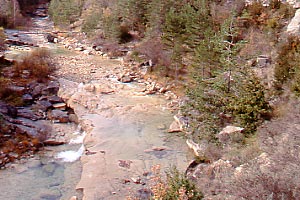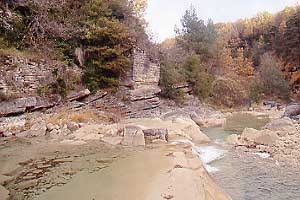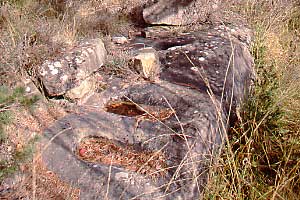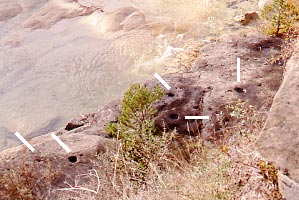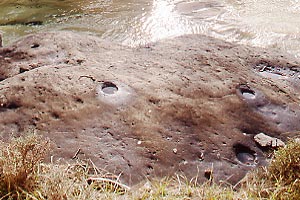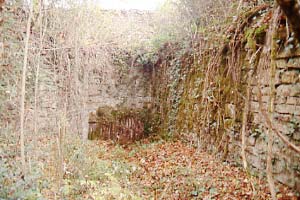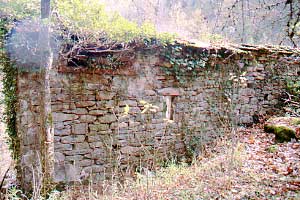| |
... Así es como llegó a Bergua, el 20 de septiembre de 1940: ligero de equipaje, pero con los libros y el
bañador, sus compañeros inseparables.
Se hospedó en casa Aguau (el molinero), aunque la escuela tenía vivienda, y por tanto el tema del
agua iba a ser cotidiano. Enseguida se enteró que el molino tenía una estupenda balsa, que
le invitaría a soñar con un buen baño: En cuanto haga bueno, me voy a nadar a la balsa del molino,
repetía a menudo.
Pero si eso es imposible, D. Luis, que es muy profunda y se ahogará..., le respondían.
Aquel otoño fue muy lluvioso y tardó en aparecer un día adecuado.
¡Por fin un día soleado! En cuanto salga de clase, a las 12, me voy a nadar a la balsa.
Tanto los mayores como los niños estaban intrigados con las aficiones natatorias de D. Luis, porque en
la montaña nadar, era sinónimo de vadear o pasar un río por la zona de agua remansada.
No comprendían cómo el Maestro iba a "pasar a nado" la balsa,
de más de 3 m. de profundidad... A la hora prevista, cogió el bañador (de peto y tirantes)
y marchó camino abajo hacia el molino.
Cuando llegó se encontró con una sorpresa, que recuerda como si fuese ayer:
Todos los chicos estaban alrededor de la balsa y varios paisanos de los lugares vecinos que habían acudido a moler.
Estos, seguro que vienen a ver cómo se ahoga el Maestro..., pensó.
Ante semejante expectación, se lanzó al agua, cruzando la balsa en todas direcciones, con la misma
soltura que los barbos. Podemos imaginarnos el asombro aquellas personas, que jamás habían visto nadar
a nadie de esa forma. Tanto es así que el abuelo del molino le dijo: Hace unos días se me cayó
un jadico al agua, igual me lo podría coger Vd.
Ni corto, ni perezoso, buceó hasta el fondo, saliendo enseguida con el jadico en la mano. ...
|
| | |
... And that's how he eventually arrived in Bergua on September 20th 1940. Packed light, but not without his inseparable friends
his books and swimsuit.
Even though there was housing available at the school, he was lodged in casa Aguau (the miller's house) where
water would become the talk of each day. He soon learned that there was a great pond at the mill and he started
to long for a nice swim. As soon as the weather permits, I'll go for a dip at the mill, he repeatedly said.
But that is impossible, D. Luis, they replied, it's very deep and you will drown.
It happened to be a very wet autumn and time went by in wait for a suitable day.
Finally came a sunny day and the plan was to go for a swim after school hours at 12 o'clock.
Both adult and child where intrigued by the swimming interests of D. Luis. For them to swim
actually meant to wade through a river at a fordable spot. They couldn't grasp how the Master would swim
across a pond of more than 3m deep. ... At the intended hour he grabbed his swimsuit (with shoulder straps) and walked down
to the mill.
The surprise waiting for him is still fresh in his memory. All children were gathered around the pond.
They were joined by several people of neighboring villages who happened to be at the mill for business.
They are here only to witness how the master manages to drown himself he thought about the latter.
So he jumped into the water amid much interest and casually swam across in every direction. Try to understand
the astonishment of these people who had never seen someone swim in this fashion. So much so
that the miller addressed him with the words A few days ago I've lost a small hoe into the water. You could perhaps fetch
it while you're there?
And helpfull as ever, he dived to the bottom and re-emerged with the hoe. ... |


